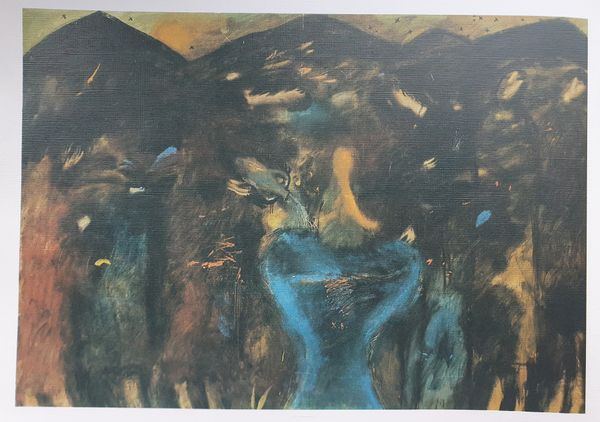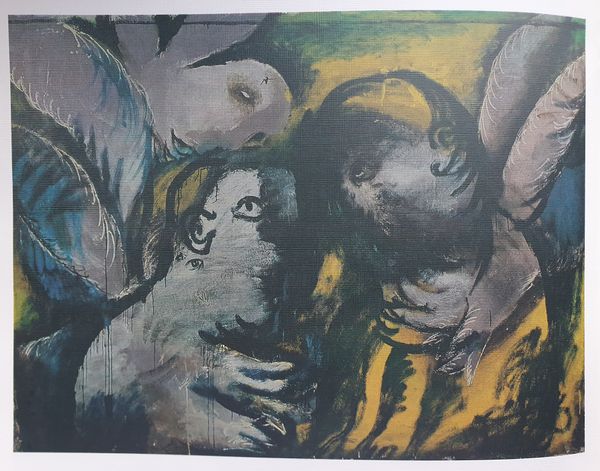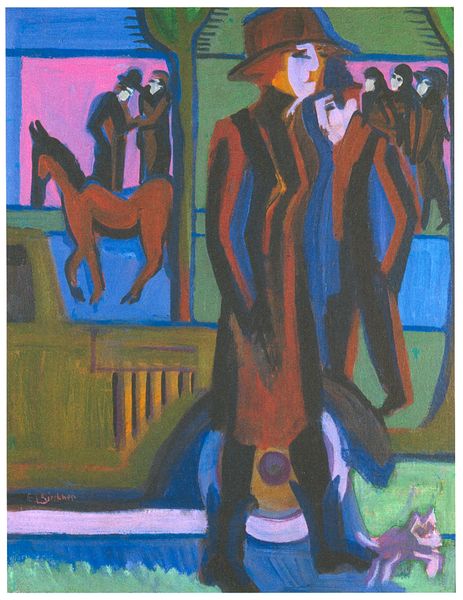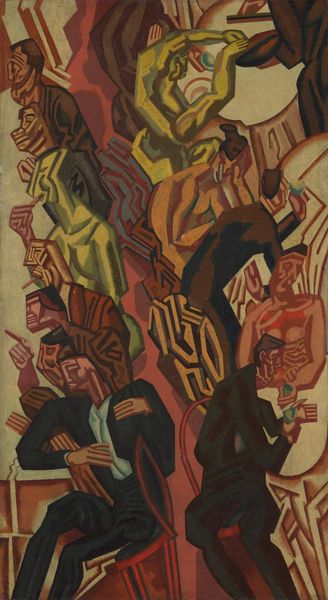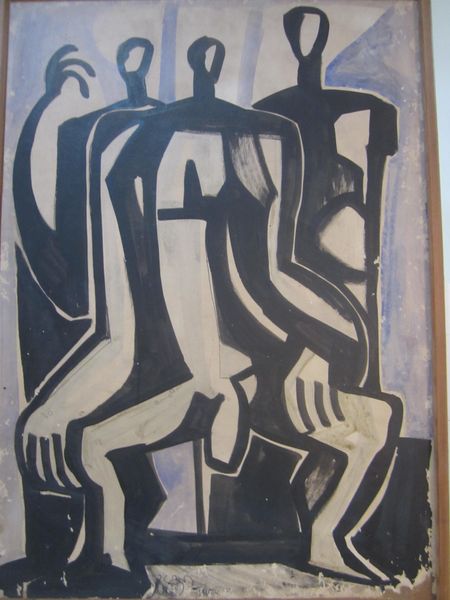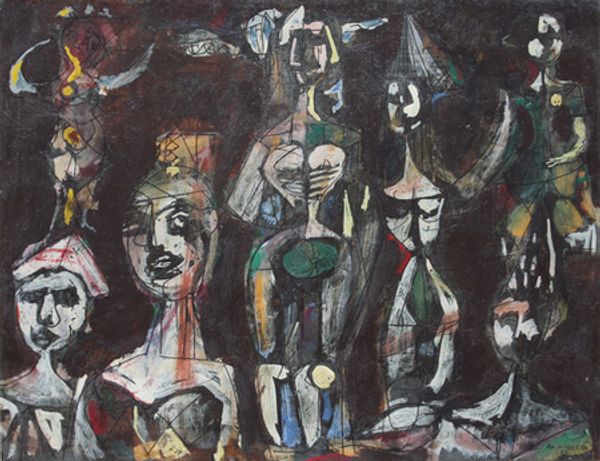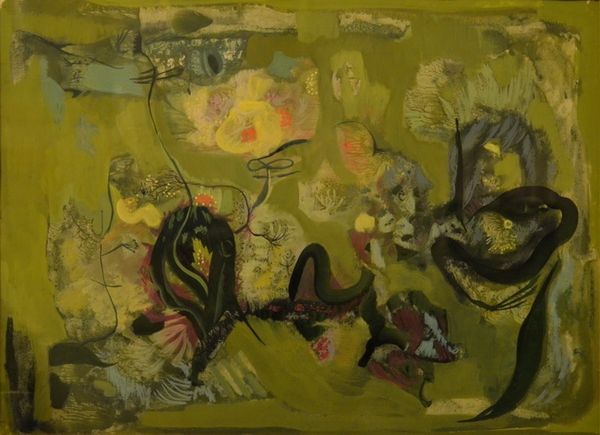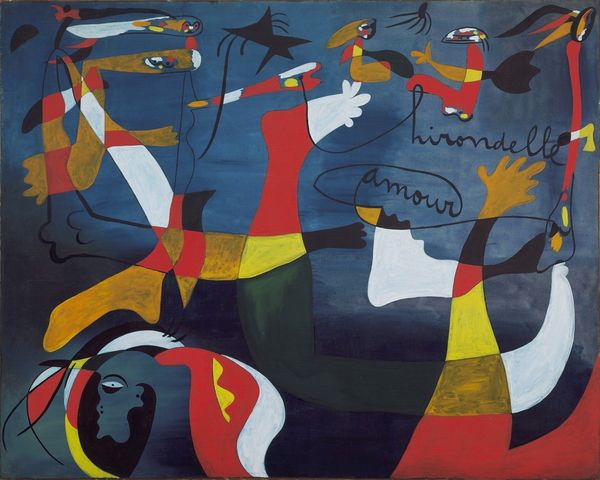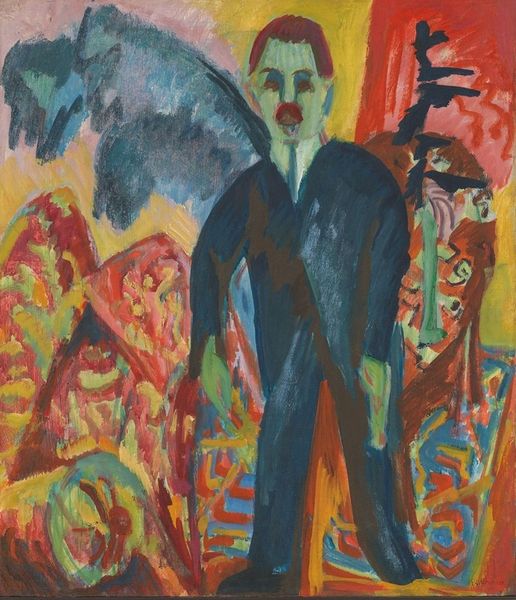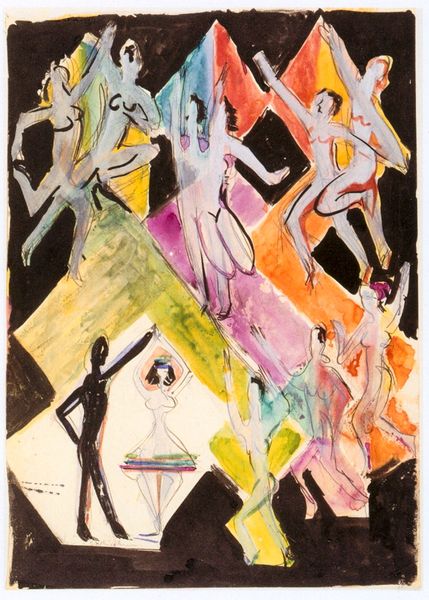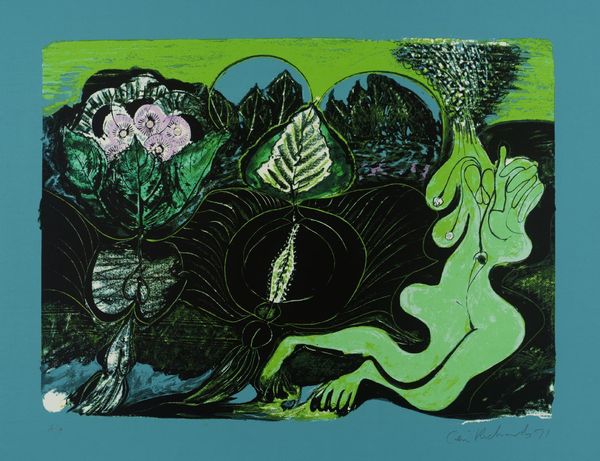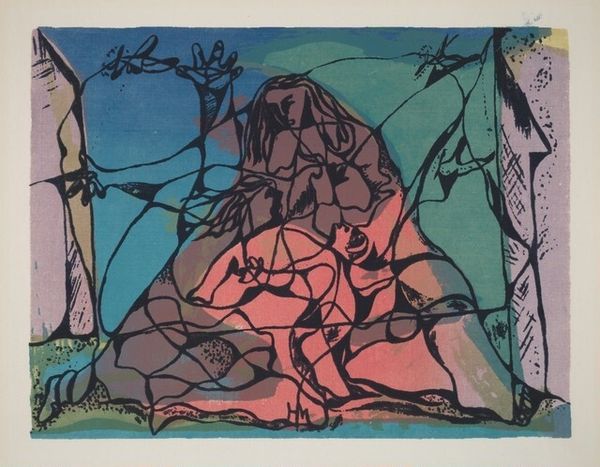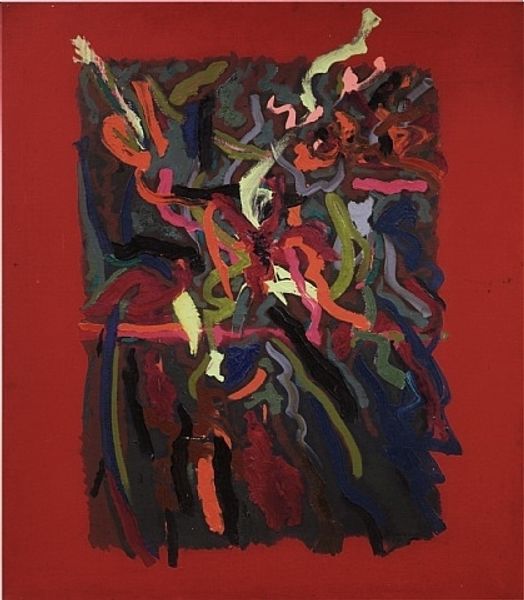
painting, acrylic-paint
portrait
contemporary
abstract painting
painting
acrylic-paint
figuration
acrylic on canvas
painting art
Dimensions: 180 x 200 cm
Copyright: Oleg Holosiy,Fair Use
Curator: Oleg Holosiy painted "Decabrists" in 1990 using acrylic on canvas. What strikes you about this composition? Editor: The texture feels almost like it’s built from raw pigment, thick and gritty in places. And this pervasive muted palette makes the imagery seem faded, as though from a disturbed, collective memory. Curator: Indeed. The four figures, emerging from palm-like forms, recall historical images of the Decembrists, Russian revolutionaries. Holosiy explores themes of utopian ideals, political transformation, and subsequent disillusionment in the post-Soviet era through these haunting forms. Notice how they almost melt into the landscape? Editor: The layering and application of the acrylic, particularly in the dark sections, is very interesting. You can see how the artist scraped back into the paint to build up these quite sinister looking apparitions. The dark circle in the sky adds a sense of foreboding, I wonder what that represents. Curator: Holosiy often used archetypal images and symbols—in this case, referencing Russia’s turbulent past but within the shifting, dreamlike landscape of a post-Soviet Ukraine searching for a new identity. The Decembrists failed, but their story endured, morphing into myth and symbol over time. The sky could be a solar eclipse, symbolic of some political disruption to come, or maybe revolution itself. Editor: The choice of acrylic too, considering its synthetic origins, speaks to a kind of disconnect from tradition, a manufactured longing or even nostalgia perhaps. A mass produced imitation of depth through painterly surface? Curator: Possibly. Acrylic allowed artists new textures and vibrant hues but here the artist instead muted everything, a conscious choice. In this piece, I read not so much nostalgia as an acknowledgement that history always haunts the present and influences the future, even when covered up with artifice. Editor: Fascinating to consider those historical currents flowing beneath the visible surface. Seeing the texture in relation to this buried meaning changes my whole perception. Curator: Absolutely. I see how the artist layered both process and symbolism, asking viewers to reconsider received history in light of Ukraine's then-new circumstances. Editor: And I appreciate considering the way in which these complex meanings emerge directly from the physicality of paint, rather than purely through representational elements.
Comments
No comments
Be the first to comment and join the conversation on the ultimate creative platform.
